
An advanced training with dyer Marie Marquet and designer Yohan Puiselvert. We learned how to make a serigraphy frame and how to use it with natural mordants and dyes on cellulosic fibres. Another world of techniques to explore!
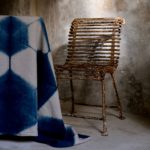
It was a cold but sunny day, as Provence makes them, in this magical place decorator Richard Goullet created. Journalist Marie Maud Levron and photographer Yann Deret where there to shoot the house, and Richard was so kind as to put forward some of my products. He has been a guardian angel for me, ever since I met him when moving back to France, so this is a heartfelt tribute to him. Of course my pictures don’t do his place justice, but the shoot was published in the December 2021 publication of Art et Decoration Magazine, with the “proper” pictures! So this is behind the scene set… All photos are linked to their respective product or category
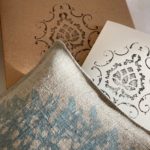
In this exceptional year where many families won’t be able to get together, gift wrapping takes on a special importance. I have brainstormed a lot to figure out a packaging that would be both easy on the environment yet elegant. All the materials are based on recycled paper, and personalised as needed by printing the logo with compostable inks. I also include a card, just pop me an email with the text and I will be happy to hand write it for you! https://youtu.be/70120SjQFow
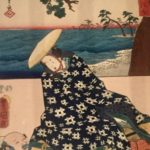
It seems as I haven’ really come back from Japan… keep looking for indigo everywhere! On a busy day in paris, I managed to stop at the Musee Guimet to catch an exhibition showcasing a flurry of etchings from the famed Tokaido route. The Tokaido is the east and most famous of the Gokaido routes. It started to develop from the Kamakura (1185-1333) period, but reached a peak during the Edo (1603-1868) period. We have heard about it many times during our Japanese workshops as it widely participated to the flourishing indigo economy on that part of the island. Indigo is indeed very present in the etchings, in the landscapes but also on the clothes which are a fascinating sight if you have the slightest interest in indigo reserve techniques! The…
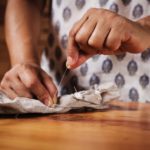
Nuishibori is a name used in Japan for all reserve techniques where stitching and tying is involved. It is a fascinating world I am starting to explore, and I find that applying it to our typically French fabrics created a wonderful cultural melting pot. Stitching and tying the fabric. depending on the pattern the stitches are more or less far appart, but it always involves a considerable amount of stitches and knots per square meter of fabric. Indigo dyeing the tied bundles Some finished fabrics… bliss! https://www.youtube.com/watch?v=TyH3Rbf6cWY https://www.youtube.com/watch?v=dKsh-DQuH6o
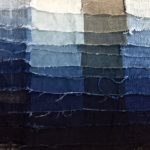
In the world of natural dyes, indigo has a place on it’s own. Unlike other dyes, it does not need mordanting and can be applied to the fabric straight after scouring. However, it is still very labour intensive, and patience is still of essence here. The dye is applied by layers, dipping the fabric repetitively, and oxygenating it between the dips to allow the indigo blue to appear and intensify with every subsequent dip. One of the many things that we learned during our 10 day advanced course at Buaisou, in Japan, is to rinse and fix the indigo. It might sound like a simple thing, but careful manipulation of the fabric during those steps is paramount to the final effect. The rinsing process involves several cold and…
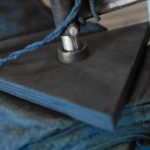
Itajime shibori is another reserve technique used to create patterns. This time the fabric is folded and pressed between two pieces of wood. The folds, along with press placement, lead to a variety of patterns. I am always in awe with the magic of those geometric creations when unfolding the fabric, it’s the best time!! The fabric is carefully folded and clamped between two wood presses A number of dips in the indigo vat are necessary to obtain the required depth of colour. Between each dip, the fabric is patiently oxygenated by opening up each fold. It is then rinsed and the process is repeated After unfolding… Bliss! https://www.youtube.com/watch?v=Lj4QduRprUc
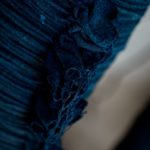
The Arashi pattern is created by tying a piece of cloth very tightly around a cylinder and then crumpling down the fabric to form little creases. It is one of the numerous reserve techniques used in Japan grouped under the shibori term. The tradition was to use a very large bamboo section in Japan, but here, we make do with PVC tube. The fabric is dyed in the indigo vat, several bath separated by oxygenation and rinsing are necessary to achieve the desired tint. After the 3 days long process of rinsing and scouring, the fabric is put to dry. The word Arashi means lightning, but to me the pattern evokes water, with an infinity of ideas for it’s future use around the house and body.. https://www.youtube.com/watch?v=pzlLxugcTQ0
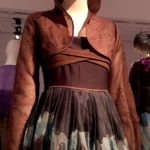
A sublime exhibition at the Musee Guimet in Paris, an endless source of inspiration as all her creations where based on naturally dyed, hand made fabrics, dreamy indeed! The exhibition opens with traditional Korean costumes, all recreated by the Korean stylist. Most women’s clothing feature the Hanbok, a very short and elegant short top, emblem of Korean traditional costume. Even the farmers had extremely elegant clothing.. In this very hot and humid climate, those bamboo vest and fore arm bands where used against the skin, underneath clothing, to prevent them from sticking to the skin and leaving a layer of air to ventilate the body… The second part of the exhibition features Lee Young-Hee’s creations.